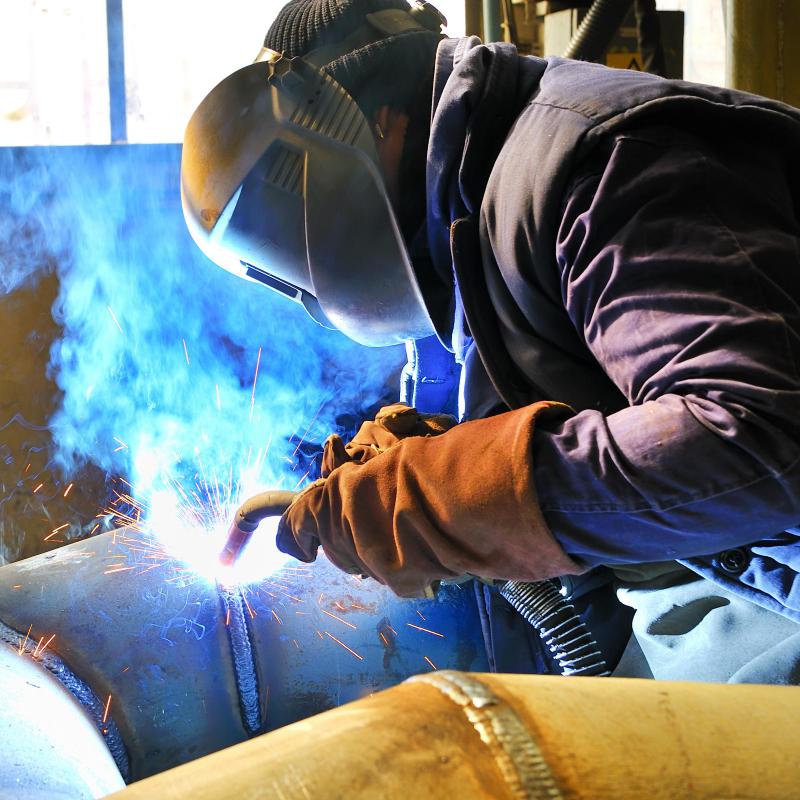At WiseGEEK, we're committed to delivering accurate, trustworthy information. Our expert-authored content is rigorously fact-checked and sourced from credible authorities. Discover how we uphold the highest standards in providing you with reliable knowledge.
What are the Different Types of Welding Alloys?
Welding is a process of bonding two pieces of metal together by melting the points to be joined, along with a filler material, and then letting the joint cool. The filler material is called a welding alloy. There are many types of welding alloys available, including alloys made from aluminum, bronze, cast iron, cobalt, copper, magnesium, nickel, steel, titanium, and zirconium. Alloys are also made from various combinations of these metals.
Not only do welding alloys have different metal compositions, they also have varying forms, properties and electrode types. Some of the forms available include composite, paste, powder, solid wire, sheet, foil, thermite mix and tubular wire. Different fillers have different strengths and melting ranges. Ultimate tensile strength (UTS) is the breaking load of the alloy, while yield strength refers to the point at which the alloy begins to deform under stress. Electrode choices include TIG electrodes, resistance welding electrodes, and cutting or gouging electrodes.

The first thing to consider when choosing welding alloys is the type of metal that is being welding. If two pieces of copper are being joined together, then an alloy should be chosen which bonds well with copper. If two dissimilar pieces of metal are being welded, such as copper to steel, then alloys like aluminum bronze or nickel aluminum bronze would be appropriate.

Because there are a variety of alloys which will work with each metal, there are a number of additional factors to evaluate. One consideration is how easy the type of alloy is to weld. The choice is also dependent upon the application and performance specifications for the part being welding. If a joint is going to be exposed to extreme heat, for example, then the filler alloy should have a high melting point.

Joints which will be subjected to higher stress require stronger welding alloys. Low fuming bronze nickel and aluminum bronze alloys are both recommended for high strength metals. Ductility, or the ability to be shaped, is another quality to consider. Joints which will be exposed to water need welding allows with higher corrosion resistance, such as naval bronze, aluminum bronze, nickel aluminum bronze, and copper nickel alloys.

Some alloys may work well, but are not attractive. If a joint is going to be visible, such as a weld on a metal handrail, then another consideration is the color match. Most welding suppliers can provide charts which will show the post-weld color of welding alloys. Nickel silver and low fuming bronze nickel alloys are both good color matches for stainless steel. Silicon bronze alloy is often used in metal sculptures, where weld appearance is critical.

There is often more than one acceptable choice when selecting welding alloys. The various factors that should be considered, however, make the decision more complex. If the part being repaired or constructed contains welding alloy specifications, they should be followed to avoid breakage or deformation of the weld.
AS FEATURED ON:
AS FEATURED ON:















Discussion Comments
We want technical details of RWMA alloys.
Post your comments